


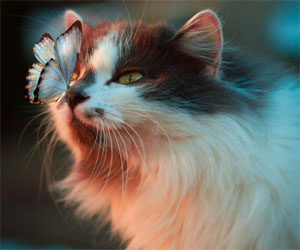
Cats are often perceived as enigmatic creatures, each with a unique personality that can range from aloof and independent to affectionate and playful. Just like people, these feline companions have distinct traits and quirks that make them special. In this article, we'll delve into the fascinating realm of cat personalities and explore the factors that contribute to these individual variations.
1. The Aloof Independent Cat: Some cats are known for their independent nature. They may appear aloof and prefer solitude, often seeking out quiet corners and napping spots. These cats tend to be self-sufficient and may not demand much attention, but their moments of affection can be deeply cherished.
2. The Social Butterflies: On the other end of the spectrum, there are cats that thrive on social interaction. They crave human companionship and may follow you around the house, eager for cuddles and playtime. These social cats can be highly affectionate and enjoy being the center of attention.
3. Playful And Energetic Cats: If you have a cat that is constantly on the move, chasing toys, and pouncing on imaginary prey, you have a playful and energetic companion. These cats are often young and curious, and they require plenty of mental and physical stimulation to stay happy.
4. The Cool And Calm Cats: Some cats exude a sense of calm and tranquility. They are not easily perturbed by changes in their environment and may be more adaptable to new situations. These cats can provide a soothing presence in your home.
5. Vocal And Chatty Cats: If your cat is a talker, you have a chatty feline. Some cats are more vocal than others, expressing themselves through meows, purrs, and even chirps. Understanding their unique vocalizations can help you interpret their needs and moods.
6. Shy And Timid Cats: Shy and timid cats are often cautious in new situations and may take time to warm up to people or other animals. Patience and gentle encouragement are key to helping them build confidence.
7. Confident And Fearless Cats: Conversely, some cats are fearless and confident in any situation. They may be the first to investigate new visitors or explore unfamiliar spaces. These cats tend to have a strong sense of curiosity and adventure.
8. The Lap Cat: Lap cats are the epitome of affection. They love to snuggle on your lap or curl up next to you. These cats provide warmth and comfort, and their purring is a soothing melody of contentment.
9. Mischief Makers: Mischief makers are the cats that love to explore and get into everything. They may be prone to knocking things off shelves, unraveling toilet paper, and generally causing playful chaos. While their antics can be exasperating, they bring a dose of humor to your life.
10. The Loyal Companions: Loyal cats form strong bonds with their human caregivers. They are often by your side, offering unwavering support and affection. These cats make you feel truly cherished.
Understanding your cat's personality is a rewarding journey that strengthens your bond and enriches your relationship. Just as people have different temperaments, so do our feline friends. Embrace and celebrate your cat's unique personality, and you'll find that the diversity of cat personalities is one of the many joys of sharing your life with these wonderful creatures.
The Power Of Renewable Energy Investment
 Economic Benefits Of Renewable Energy Investment:
Economic Benefits Of Renewable Energy Investment:
Job Creation: One of the most significant economic benefits of renewable energy investment is job creation. The renewable energy sector is labor-intensive, from manufacturing solar panels to maintaining wind turbines. As this sector expands, it generates employment opportunities in both rural and urban areas.
Stable Returns: Renewable energy projects often provide stable, long-term returns. Solar and wind farms, for instance, have predictable energy generation patterns, making them attractive investments with consistent revenue streams.
Energy Cost Savings: For businesses and homeowners, investing in renewable energy can lead to substantial savings on energy bills. Solar panels, for example, allow individuals to generate their own electricity and potentially sell excess power back to the grid.
Environmental Advantages:
The environmental advantages of renewable energy investment are equally compelling:
Reduced Carbon Emissions: By replacing fossil fuels with clean energy sources, renewable energy investments contribute to a significant reduction in greenhouse gas emissions. This is a crucial step in mitigating climate change.
Clean Air And Water: Reducing air pollution by minimizing emissions from coal and natural gas power plants leads to improved air quality and public health. Moreover, clean energy technologies typically use less water compared to conventional power generation methods, which helps protect this vital resource.

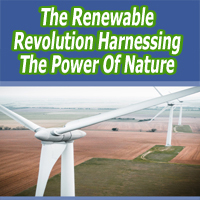



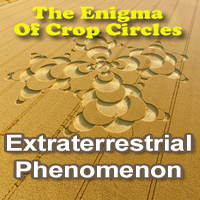
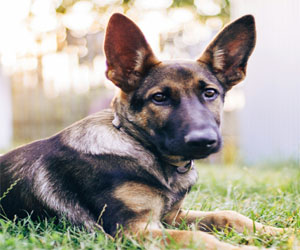 Stage 3: Socialization Stage (3-14 Weeks)
Stage 3: Socialization Stage (3-14 Weeks)
The socialization stage is a critical period that usually spans from 3 to 14 weeks. During this time, puppies are highly impressionable. They become more curious and open to new experiences. It's an ideal time to expose them to various people, animals, environments, and situations. Proper socialization can help prevent fear and aggression issues later in life.
Stage 4: Juvenile Stage (3-6 Months)
The juvenile stage occurs from three to six months of age. Puppies go through rapid growth and development during this period. They may experience teething, increased energy levels, and a stronger desire to explore their surroundings. Obedience training should begin during this phase to instill basic commands and good manners.
Stage 5: Adolescent Stage (6-18 Months)
The adolescent stage spans from six to 18 months. This stage is characterized by the dog's transition into sexual maturity. Behavioral changes and challenges can emerge, including increased independence, the testing of boundaries, and sometimes a resurgence of puppy-like behavior. It's essential to maintain consistent training and provide appropriate outlets for their energy.
Stage 6: Early Adulthood (1-3 Years)
Early adulthood typically starts around one year of age and continues until around three years. Dogs become physically and mentally mature, and their behavior stabilizes. They are more capable of advanced training and can participate in various activities, such as agility or advanced obedience training.
Understanding Cat Hunting Instincts
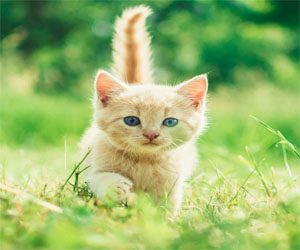 2. Instinctual Behaviors:
2. Instinctual Behaviors:
Cat hunting instincts are manifested through various behaviors:
Stalking: Cats often stalk their prey by crouching low and moving stealthily. This behavior can be observed when they watch birds through a window or engage in interactive play with toys.
Pouncing: The classic pounce is a vital hunting skill. Cats will leap onto their prey, displaying precise timing and agility.
Capture And Kill: After pouncing, cats use their sharp claws and teeth to catch and subdue their prey. While domestic cats don't necessarily intend to kill, they practice this behavior during play.
Playful Ambushes: Cats engage in playful ambushes with other pets or even unsuspecting humans. These antics serve as a form of practice for real hunting.
3. Benefits Of Hunting Instincts:
Hunting instincts offer several advantages for cats:
Mental Stimulation: Hunting behavior keeps a cat's mind sharp and active. It provides a sense of purpose and wards off boredom.
Exercise: Hunting-related activities, such as stalking and pouncing, provide physical exercise that contributes to a cat's overall well-being.
Bonding: Engaging in play that mimics hunting allows cats to bond with their owners and build trust.
 "The speeches of Lake Leman will become angered,
"The speeches of Lake Leman will become angered,
The days will drag out into weeks, then months,
Then years, then all will fail."
Interpreters have suggested that "Lake Leman" refers to Lake Geneva, a location that has played a significant role in the development of modern technology, particularly in the field of physics and computing. The reference to time dragging on, eventually leading to failure, is seen by some as a foreshadowing of the potential dangers of overreliance on technology and the concept of time dilation due to technological advances.
Quatrain 72 from Century 10 is also often cited in discussions about Nostradamus and technology:
"The year 1999, seventh month,
From the sky will come a great King of Terror:
To bring back to life the great King of the Mongols,
Before and after, Mars to reign by good luck."
Nature's Artistry In Fields
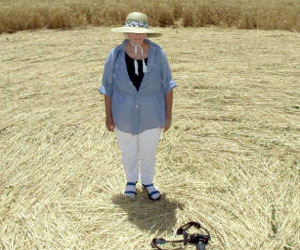 Wind And Atmospheric Conditions
Wind And Atmospheric Conditions
One of the most common natural explanations for crop circles involves the interplay of wind and atmospheric conditions. Some crop circles are thought to be created when whirlwinds or vortices occur, often referred to as "dust devils." These whirlwinds can generate powerful winds that bend and flatten the crops, forming circular patterns. The precise geometric shapes in some crop circles can be attributed to the organized flow of air currents during these events.
Plants' Response To Physical Stress
Crops, particularly cereal grains like wheat and barley, are known to exhibit unique responses to physical stress. When plants are subjected to mechanical pressure, they can exhibit what's known as "node elongation." This phenomenon causes the plants to stretch and bend at specific nodes, resulting in a bending pattern that forms a circular shape when viewed from above. These natural responses to stress can create crop circles with intricate designs that mimic human-made ones.
Electromagnetic Fields
Some crop circle enthusiasts propose that electromagnetic fields may play a role in the formation of these patterns. It's suggested that these fields could affect the growth of crops, causing them to bend and form circular shapes. While this theory is intriguing, scientific evidence linking electromagnetic fields to crop circle formation remains inconclusive.